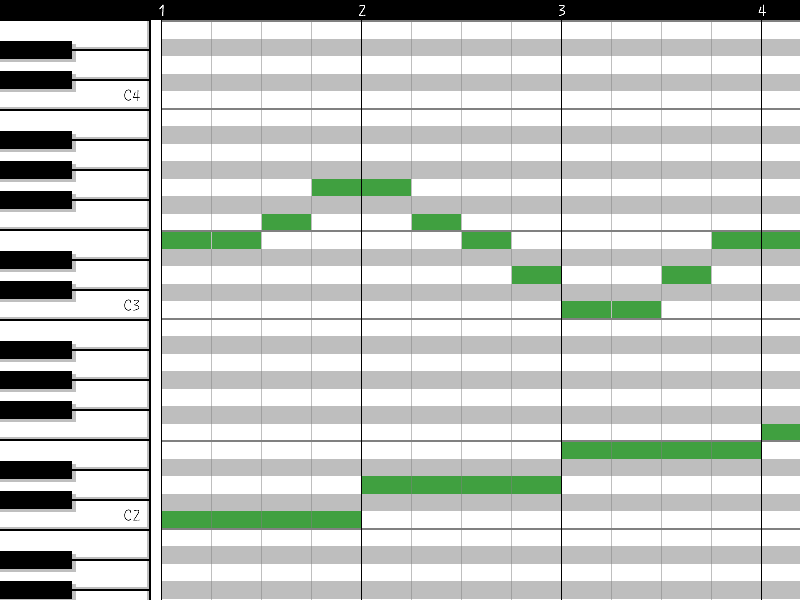Disclaimer: Our guide below includes lots of electronic music jargon—if you feel overwhelmed by any unfamiliar phrases, we recommend checking out SYNC’s list of common music software terms, as well as our introductory guide to MIDI basics.
Fledgling electronic musicians might look at MIDI channels like a guitar with 16 separate necks: impressive in musical potential, but perplexing when it boils down to actual playability.
The good news is that MIDI channels are more like 16 separate digital limbs all working in tandem to vastly enhance your songwriting workflow and expand your sonic capabilities with electronic music instruments.
What are MIDI channels?
MIDI channels — numbered 1 to 16 — are the digital lines of communication between DAWs, software plugins, and just about every electronic instrument built in the last 30 years. Digitally speaking, a “channel” is any route of communication for MIDI data to travel.
Each MIDI channel transmits its own set of user-programmed MIDI data, from simple note on/off commands to complex sequences and control changes messages.
Be sure to note that MIDI channels exist entirely in the digital realm. Don’t confuse MIDI channel methodology with a physical patchbay for routing audio signals, like you’d find on a hardware mixing console or modular synth.
RELATED ARTICLE
How do MIDI channels work?
MIDI channels enable you to play multiple electronic instruments simultaneously with a single device (like a software DAW or hardware MIDI controller). They transmit musical data from your controller device to MIDI-enabled instruments in your rig. MIDI channel routing is essential to synchronizing your electronic instruments for unison playback.
Modern music terminology frequently refers to the controller device in any MIDI workflow as the “brain.” The brain uses MIDI channels to deliver specific commands to multiple instruments within a single network of digital devices.
Imagine MIDI protocol as the central nervous system that controls the activities of all electronic instruments in your rig –– MIDI channels are the neurons that deliver control commands from the brain device to individual instruments.
How do instruments know which MIDI channels to play?
It’s important to note that MIDI-enabled instruments receive data from all 16 MIDI channels at once, but only respond to (or play) data that’s relayed by the specific MIDI channel to which the instrument is set (or tuned).
Here’s a tip for understanding MIDI channel methodology: think of a single household with multiple TVs, all sharing the same cable subscription. Each TV displays its own program, and changing the channel on one TV won’t affect the displays of other TVs also operating at the same time.
Tuning the MIDI channels on your electronic instrument follows the same principle as switching channels on your TV. Each instrument in your rig plays its own set of sounds when tuned to a specific MIDI channel without impacting playback for separate instruments tuned to their own MIDI channels.
Read the “MIDI implementation guide” in your instrument’s operation manual for specific instructions on MIDI channel tuning. Every device is different, but tuning your own instrument’s respective MIDI channel typically requires just one or two simple steps.
RELATED VIDEO
Arranging music with MIDI channels
Most modern musical sequencing is accomplished with MIDI channel routing. This gives one device the ability to dictate separate series of musical messages to multiple electronic instruments in real-time.
Transmitting musical data via MIDI channels enables you to compose multi-tiered pieces of music with a computer. One musician — with a beginner-level aptitude for MIDI channel routing — can arrange and perform complex arrangements with the playing dexterity, melodic variety, and sonic depth of a full band.

MIDI Piano Roll
Step 1: Using the piano roll editor in any DAW, you can write up to 16 tracks of music for synchronized playback — one track per MIDI channel. For this example, we’ll only need three: one track for melodies, another for bass lines, and a third track dedicated to rhythmic patterns.
Step 2: The corresponding MIDI data for each musical track in your DAW is assigned to a user-selected MIDI channel. The melodic data can be assigned to MIDI channel 1, the bass data to channel 2, and the rhythmic data to channel 10 (in general MIDI protocol, channel 10 is reserved for percussive data).
Step 3: Each MIDI channel is routed from the DAW to an individual electronic instrument via tuning. With the ability to instantly swap lines of music between devices, you can quickly find the instrument in your setup that’s best suited for each track. If an instrument is tuned to a MIDI channel that’s not streaming data, the instrument will not make any sound.
MIDI channels can be used to merge distinctly different electronic instruments into a perfectly synchronized and fully automated digital band. Check out SYNC’s recommended MIDI-powered rig below, which features some versatile electronic music devices available right now on Reverb:
| Device | Function | Role |
| Ableton Live | Digital Audio Workstation | Composition (MIDI Brain) |
| Air Music Technology Vacuum Pro | Plugin Synth | Melody/Lead (MIDI Channel 1) |
| Korg Monologue | Hardware Synth | Bass (MIDI Channel 2) |
| Arturia DrumBrute | Drum Machine | Rhythm (MIDI Channel 10) |
The model above is a powerful blueprint for basic MIDI channel routing, but it’s not a rulebook. You can quickly expand your three-piece digital band into a 16-piece orchestra of electronic instruments. MIDI channel routing lets you automate much of the playing process, allowing for a greater focus on sound design and song arrangement.
We hope our guide already has you thinking about new ways to supercharge your own workflow with MIDI channels. Stay engaged with Reverb SYNC for more helpful guides to making music in the digital realm.
Software & Plugins

